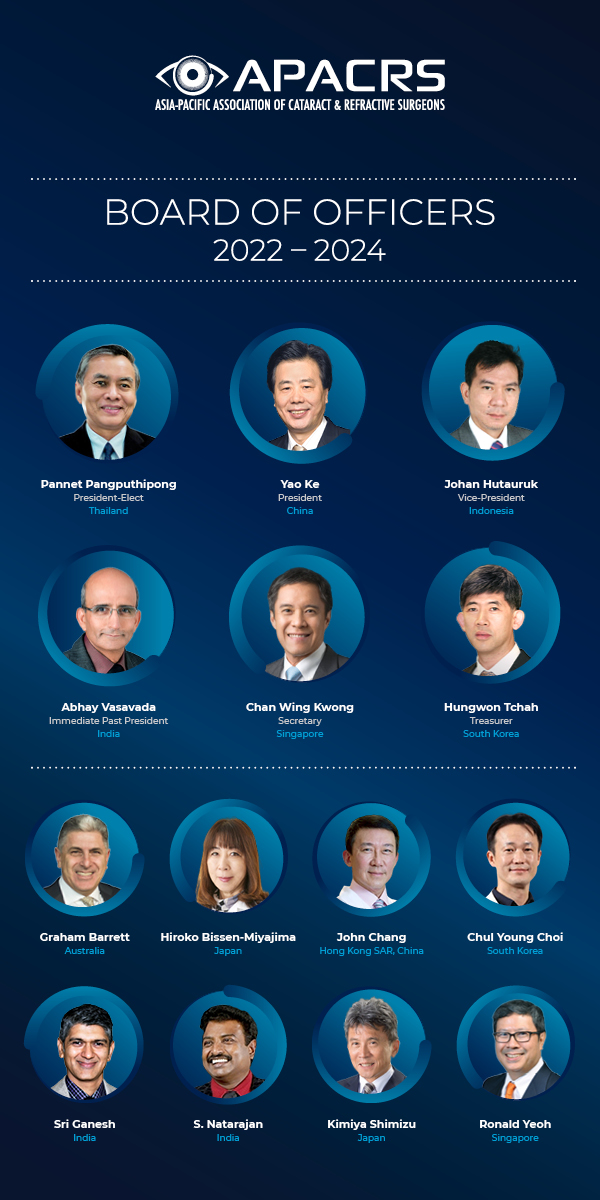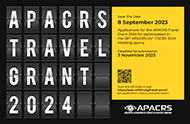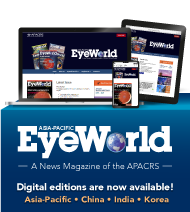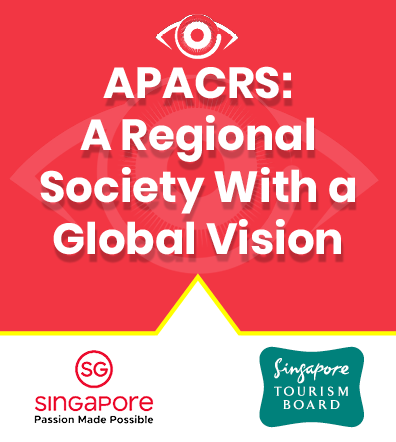Eyeworld Weekly Update |
Volume 19, Number 24 |
25 July 2014 |
- AL-Scan Optical Biometer granted 510(k) status
- Neurotrophic keratitis compound granted orphan status
- Allergan to lay off 13% of workforce
- Nicox gains expanded North American right to Sjö
- AAO to develop pediatric ophthalmology education center
- Mark Mannis, MD, awarded Castroviejo Medal
- Doug Koch, MD, appointed to PowerVision board
AL-Scan Optical Biometer granted 510(k) status
The U.S. Food and Drug Administration (FDA) has issued 510K clearance for the AL-Scan Optical Biometer, which "provides 6 essential values for cataract surgery very quickly," manufacturer Nidek (Fremont, Calif., U.S.) said in a news release.Nidek said its new biometer takes just 10 seconds to measure axial length, corneal curvature radius, anterior chamber depth, central corneal thickness, white-to-white distance, and pupil size. It incorporates 3D auto tracking and auto shot, Nidek added, along with 9 IOL calculation formulas.
Neurotrophic keratitis compound granted orphan status
Recombinant human nerve growth factor (rhNGF) has been designated an orphan drug by the U.S. Food and Drug Administration, developer Dompé (Milan, Italy) said in a news release. The drug is under development for the treatment of neurotrophic keratitis.The compound is in advanced stages of experimentation for the treatment of neurotrophic keratitis in the REPARO study. The randomized, double-blind study includes 39 centers in 9 European countries (Italy, Great Britain, Germany, France, Belgium, Spain, Portugal, Poland, and Hungary) and involves patients suffering from unilateral neurotrophic keratitis with grade 2 lesions (persistent epithelial defect) or grade 3 lesions (corneal ulcers) that do not respond to the currently available medical treatment. The objective of the trial is to evaluate the safety, tolerability, and effectiveness of two different doses of rhNGF compared to the placebo. The more than 170 patients enrolled in the study are divided into 3 different groups, treated respectively with 2 different doses of rhNGF and with the placebo. The secondary objectives include the evaluation of corneal lesion healing, improvement in visual acuity, and the sensitivity of the cornea.
Allergan to lay off 13% of workforce
As part of its plan to avoid a hostile takeover bid, Allergan (Irvine, Calif., U.S.) has said it will eliminate 1,500 positions and not fill another 250 open ones, the company said during its quarterly earnings release. It will also cut back on early discovery work in its R&D division to reduce its 2015 budget by US$475 million.Allergan is in the midst of a heated takeover battle with Laval, Canada-based Valeant Pharmaceuticals.
Nicox gains expanded North American right to Sjö
Nicox SA (Sophia Antipolis, France) has acquired all North American rights to Sjö, an advanced diagnostic panel for early detection of Sjögren's syndrome, the company said in a press release. The technology, in-licensed from Immco Diagnostics (Buffalo, NY, U.S.), was launched in select U.S. markets in November 2013, Nicox said, and is now being rolled out nationwide.AAO to develop pediatric ophthalmology education center
The American Academy of Ophthalmology (AAO, San Francisco, Calif., U.S.) has partnered with the Knights Templar Eye Foundation (KTEF) to establish the first online medical resource center dedicated to children's eye care, AAO said. Made possible through a generous grant from KTEF, the virtual skills transfer center "will provide ophthalmologists globally with the latest clinical information for treating children's eye diseases and disorders."The creation of the Knights Templar Eye Foundation Pediatric Ophthalmology Education Center "aims to help prevent pediatric blindness by supporting the lifelong learning needs of pediatric ophthalmologists and the on-demand learning needs of comprehensive ophthalmologists. Regardless of location and formal training, it will allow ophthalmologists to have access to the most current surgical and clinical guidance and instruction," AAO said.
The center is expected to launch next year.
Mark Mannis, MD, awarded Castroviejo Medal
The Cornea Society has awarded the Castroviejo Medal, the Society's highest honor, to Mark J. Mannis, MD, University of California-Davis Health System Eye Center professor and chair. The medal, named in honor of Ramon Castroviejo, the father of modern corneal transplant surgery and the inspiration for the founding of the Cornea Society, is awarded annually to an individual who has made "significant contributions to the field of cornea and anterior segment surgery."Doug Koch, MD, appointed to PowerVision board
Douglas D. Koch, MD, the Allen, Mosbacher, and Law chair of ophthalmology, and professor of ophthalmology at Baylor College of Medicine, Texas, U.S., has joined the Scientific Advisory Board of PowerVision (Belmont, Calif., U.S.).PowerVision is developing the FluidVision lens, the first fluid-based accommodating IOL.
RESEARCH BRIEFS
- An association between omega-3:6 ratio intake and incident glaucoma, especially among older participants, has been reported. M. Pérez de Arcelus and colleagues followed 17,128 participants who were initially free of glaucoma for a median time of 8.2 years. During the course of the follow-up, 156 new cases of glaucoma were identified. No significant association was observed for the omega-3 or the omega-6 intake and the risk of glaucoma. Participants in the highest quintile of omega 3:6 ratio intake had a significantly higher risk of glaucoma than participants in the lowest quintile. The association was stronger when the researchers considered only those participants who were at least 40 years old. The study is reported in Clinical Nutrition.
- Systemic cyclosporine significantly reduces failure from irreversible rejection in high-risk keratoplasty, but for maximal effect, a 12-month period of treatment is necessary, asserts J.C. Hill. Forty-three patients with high-risk corneas (vascularization in 3 or 4 quadrants and >16 stromal vessels) received corneal grafts and systemic cyclosporine. Fourteen patients received the drug for 12 months and 29 for a shorter period of 4 to 6 months. A similar high-risk group of 37 patients received no systemic medication. In the control group, 23 grafts (62.2%) irreversibly rejected, compared with 9 (31.0%) and 1 (7.1%) in the short- and long-term cyclosporine groups, respectively. The grafts of patients receiving cyclosporine had a significantly better survival rate (P=0.0005) than those in the control group. The article is published online ahead of print in Ophthalmology.
- Decreased vision is associated with a significantly higher likelihood of not working, according to Cheryl E. Sherrod, MD, and colleagues. Visually impaired diabetic individuals, women, and those younger than 55 years have a particularly high risk of not working, the study authors added.
Multivariable models adjusting for age, sex, race/ethnicity, and chronic disease status were used to determine employment rates and visual impairment from 19,849 participants in the 1999-2008 National Health and Nutrition Examination Survey. Both uncorrected refractive error and visual impairment were associated with a higher likelihood of not working. Subgroups in which visual impairment was associated with even higher odds of not working included women, participants younger than 55 years, and diabetic individuals. The study is published online ahead of print in JAMA Ophthalmology. - Non-invasive oral QLT091001 (synthetic 9-cis-retinyl acetate) therapy is well tolerated and can rapidly improve visual function in some patients with Leber congenital amaurosis and RPE65 and LRAT mutations, according to an early online publication in The Lancet. Robert K. Koenekoop, MD, and colleagues enrolled patients (aged ≥6 years) with Leber congenital amaurosis and RPE65 or LRAT mutations at McGill University's Montreal Children's Hospital (Canada) in an open-label, prospective, phase 1b trial. Patients received 7 days of oral QLT091001 (10-40 mg/m2 per day). The group assessed 14 patients aged 6-38 years at baseline and days 7, 9, 14, and 30, and 2 months, and every 2 months thereafter for up to 2.2 years. A 20% improvement in retinal area on Goldmann visual fields (GVF) compared with baseline or a visual acuity improvement of 5 or more letters compared with baseline was considered an improvement in vision. After 2 years, 11 (79%) patients had returned to their baseline GVF retinal area and 10 (71%) had returned to baseline visual acuity letter values. Thus, 3 (21%) patients had a sustained GVF response and 4 (30%) had a sustained visual acuity response. Four patients had functional MRI scans, which correlated with visual response or absence of response to treatment.
 Licensed Publications |
Licensed through ASCRS American Society of Cataract and Refractive Surgery, 4000 Legato Road, Suite 700, Fairfax, VA 22033-4003, USA.
All rights reserved. The ideas and opinions expressed in EyeWorld Asia-Pacific Weekly News do not necessarily reflect those of the ASCRS�ASOA or APACRS. Mention of products or services does not constitute an endorsement by the ASCRS�ASOA or APACRS. Copyright 2008, EyeWorld News Service, a division of ASCRS Media. |




 EyeSustain Update
EyeSustain Update 2024 APACRS TRAVEL GRANT
2024 APACRS TRAVEL GRANT Digital EyeWorld
Digital EyeWorld VOL. 39 (2023), ISSUE 3
VOL. 39 (2023), ISSUE 3  Membership Information
Membership Information APACRS Principles of Preferred Practice
APACRS Principles of Preferred Practice